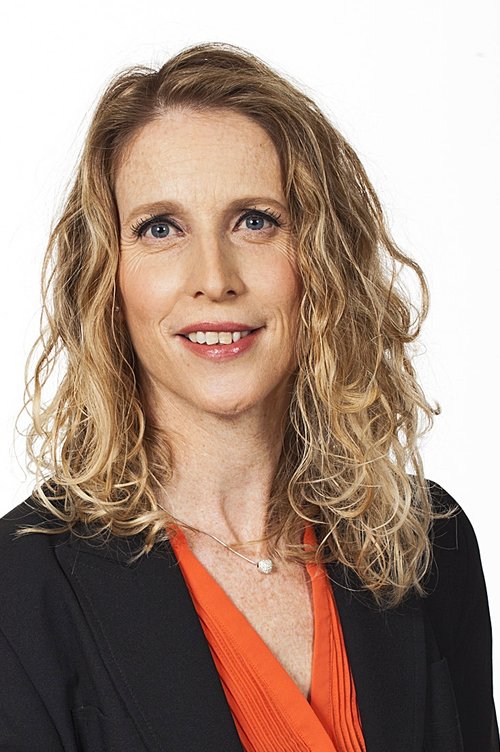The benefits to migrating to the cloud include increased flexibility and agility, faster innovation, simplifying IT systems, improved performance and a reduction of costs.
But how to enterprises come up with a strategy for a smooth transition? Meet Hadas Lahav, one woman who is helping enterprises on their journey to the cloud.

Hadas Lahav is director of product management at cybersecurity giant Tufin. Tufin is the leader in global security policy automation and list more than half of the Fortune 50 companies as clients, and also serves 19 of the top 20 banks, four of the top five insurance companies, as well as utilities, financial institutions, large global organisations and telcos).
WE CAUGHT UP WITH HADAS TO DISCOVER WHY SHE IS PASSIONATE ABOUT HELPING BUSINESSES GET INTO THE CLOUD AND WHAT CHALLENGES THEY MIGHT FACE ALONG THE WAY.
Some people struggle to know what to pursue as a career but for me there was no choice: I’ve always been curious about computers and all things tech.
When I was a child, my parents bought me and my brothers a Commodore 64 8-bit home computer, along with a few games – I enjoyed it so much I wanted to learn more, so I jumped at a chance to go to an afternoon programming class for kids. I found a book that described how the computer was built and programmed and I started building programmes and was very pleased with myself!
At university, I studied industrial engineering and management and also took plenty of coding and computer courses, but it was only when I graduated that I realised how much I enjoyed programming – I liked that you get an immediate result.
I’ve worked in the tech sector for more than 20 years, and I found my real calling when I joined ClickSoftware, where after two years as an engineer and five as a technical lead, I moved into a customer-facing product management role. I came to realise that it wasn’t all about code – it was far more than that! Seeing how end users are using what you’ve built and understanding their issues and concerns was an eye opener for me after having been the developer behind the scenes. I enjoy coding and the technical side of product development but I’m also passionate about bringing value to users that helps them be more engaged with a product and makes it easier for them to perform their work – delivering those wow moments for customers is the highlight of the work that I do with my team.
Some of my work involves product analytics – for example, collecting info from customers using Tufin’s network security automation tools about how they are using the software and what features are providing them with the most value.
I also lead the customer advisory board for Tufin – where we meet with a group of selected customers and users to discuss new features /or potential roadmap directions. It’s a great opportunity to meet a group of experts from all over the word and pinpoint what works well and what we need to improve.
Outside of work, I’m a keen hiker and traveller and love exploring new places. I’m also an avid reader, and a SUP enthusiast – my current favourite place to take my board is the Sea of Galilee.
WHAT IS NETWORK SECURITY AUTOMATION AND WHY IS IT SO IMPORTANT?
The idea is to automate all the tedious jobs that don’t require a lot of thought or intelligence but do require a lot of computer clicks – giving network administrators and security engineers more time to focus on more complex tasks and the riskier and more challenging areas that they need to address.
Automation is especially crucial in large organisations with very complex distributed networks, and who may have gone through multiple mergers and acquisitions and use several different firewall vendors. Managing these environments is exceptionally difficult.
On several occasions I’ve been privileged to be with customers when we use our network topology tool – it’s such a wow moment for them and it’s often the first time they have seen what their network looks like. Their reaction is literally priceless!
One thing I enjoy most about working for Tufin is that we sell to such a variety of verticals – banking and finance, automotive, services, utilities, insurance companies, transportation, supermarkets, hotels, tourism, universities. At our customer advisory board meetings, we have around 20 customers from many different industries – and what’s interesting is that despite their different sectors they have so much in common in terms of their network and the challenges they face.
WHAT KIND OF CHALLENGES DO ENTERPRISES TYPICALLY TEND TO FACE IN THEIR JOURNEY TO THE CLOUD?
One of the major challenges is ownership changes because when moving to the cloud there are no longer secluded dedicated teams responsible for managing and securing the various cloud environments. Every development team can have their own environment, and customers find it extremely difficult to manage and control this burst of different environments. This shift has resulted in developers having more responsibility for the security of the cloud – and it can be difficult for them to enforce security measures because they have different priorities – so security becomes very challenging. It’s the whole security v flexibility dynamic.
Our approach at Tufin is to provide visibility and automation for the entire network, so network and security teams can easily see how isolated environments interact with other environments and automate network changes accordingly. Essentially, we’re providing them a map that shows how data flows along the routes in and out of different environments; they can see what security there is and if there is anything blocking the traffic, or whether there is insecure “traffic” flowing from their network to the external world or the internet. They can also automate new network access and various other network changes across the different environment using a single tool with multiple workflows to match their specific needs.








